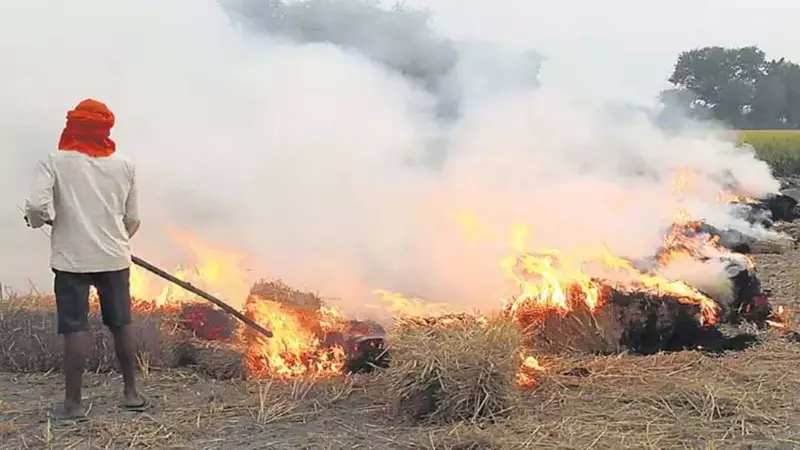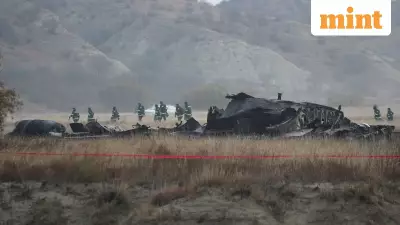
In a remarkable environmental turnaround, Punjab has recorded a staggering 92 per cent decline in paddy stubble burning incidents over the past five years. This success story emerges from data released by the Punjab Pollution Control Board (PPCB), showcasing a consistent downward trend in farm fires across the state.
The Dramatic Drop in Numbers
The official figures reveal a compelling narrative of progress. Between September 15 and November 13 in 2025, Punjab documented only 4,732 farm fire cases. This stands in stark contrast to the 62,718 incidents recorded during the same period in 2021. The year-wise data paints an encouraging picture of steady improvement.
The reduction has been particularly significant in districts that previously reported high incidence rates. Sangrur, Firozpur, and Patiala have demonstrated extraordinary progress with reductions ranging from 83% to 95% over the five-year period.
Understanding the Success Factors
PPCB officials attribute this dramatic transformation to multiple converging factors. The widespread adoption of over 1.5 lakh crop residue management machines has played a crucial role. Enhanced residue management techniques, government initiatives promoting alternative farming practices, and increasing environmental awareness among farmers have collectively contributed to this achievement.
The data on peak single-day farm fires further illustrates this positive trend. In 2021, Punjab witnessed its highest single-day count at 5,327 fires on November 4. This number has consistently decreased each year, with 2025 recording only 442 fires on November 1 as the peak so far.
The Exception Districts and Ongoing Challenges
While most districts show impressive reductions, Fazilka and Ludhiana present a contrasting picture. Fazilka reported 205 farm fire cases this year compared to 94 last year, representing a 118% increase. Ludhiana witnessed a more modest rise from 177 to 189 cases, marking a 6.7% increase.
State authorities acknowledge that despite substantial progress, work remains to completely eliminate farm fires. The agricultural sector's historical reliance on stubble burning presents ongoing challenges that require continued intervention and support.
Air Quality Data Tells a Different Story
As Delhi grapples with severe air quality, political rhetoric often blames Punjab's stubble burning. However, PPCB data reveals a different reality. During the peak stubble burning season from October to November, Punjab's Air Quality Index has predominantly remained in the moderate to satisfactory range.
Major cities including Patiala, Amritsar, Bathinda, Ropar, Jalandhar, and Ludhiana have maintained generally stable air quality with only occasional dips into the poor category, particularly around Diwali celebrations.
A PPCB officer emphasized, "The data clearly shows that the air quality has remained relatively stable and within acceptable limits. This casts doubt on the repeated allegations that Punjab's stubble burning is the primary contributor to the deteriorating air quality in Delhi."
The Diwali period provides particularly compelling evidence. In 2021, Punjab recorded 5,327 farm fires on Diwali night, but in 2025, this number plummeted to just 45 incidents - the lowest in five years.
Political Narrative Versus Ground Reality
Punjab Agriculture Minister Gurmeet Singh Khuddian questioned the scientific basis for blaming Punjab for Delhi's pollution. "If AQI in Punjab remains in satisfactory and moderate categories, even during the stubble burning season, it's illogical to blame it for Delhi's pollution, which is located hundreds of kilometers away," Khuddian stated.
This perspective finds support from unexpected quarters. Former National Green Tribunal judge Sudhir Agarwal, during a seminar last year, questioned the validity of blaming Punjab, citing geographical distance and inconsistent wind patterns.
Experts have repeatedly pointed out that local pollution sources in Delhi - including vehicular emissions, industrial pollutants, and firecracker use - significantly contribute to the capital's poor air quality. As one air quality researcher noted, "It is misleading and overly simplistic to place the blame entirely on Punjab."
Despite facing additional challenges from devastating floods in 2025 that left fields covered in silt, the Punjab Agriculture Department remains committed to further reducing stubble burning. Director Jaswant Singh explained the state's ongoing efforts to clear silt and support farmers in resuming agricultural activities.
As PPCB officials concluded, "Punjab's progress in reducing stubble burning is commendable, but we still have work to do" - a statement that captures both the achievement and the road ahead for India's agricultural heartland.





